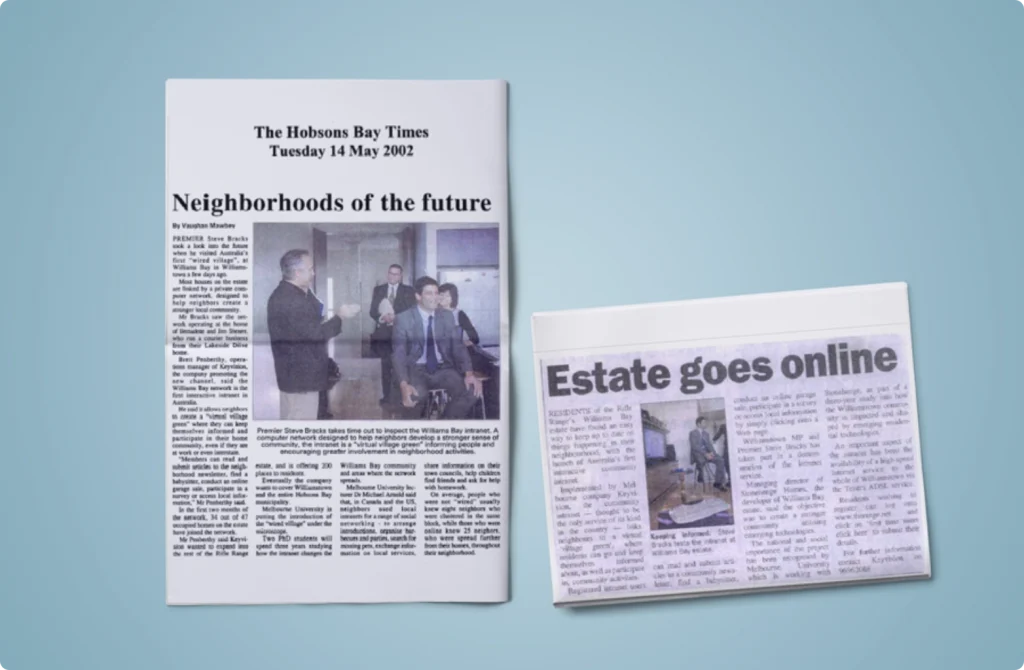

Premier Steve Bracks look into the future when he visited Australia’s first ‘wired village’, at Williams Bay in Williamstown a few days ago.
Most houses on the estate are linked by a private computer network, designed to help neighbours create a stronger local community.
Mr Bracks saw the network operating at the home of Bernadette and Jim Shearer, who ran a courier business from their Lakeside Drive home.
Brett Penberthy, operations manager at Keyvision, the company promoting the nee channel, said the Williams Bay network is the first interacting intranet in Australia.
He said it allows neighbours to create a “virtual village” where they can eep themselves informed and participate in their home community, even if they are at work or interstate.
“Members can read and submit articles to the neighbourhood newsletter, find a babysitter, conduct and online garage sale, participate in a survey or access local information”, Mr Penberthy said.
In the first two months of the network, 34 to 47 occupied homes on the estate have joined the network.
Mr Penberthy said Keyvision wanted to expand into the rest of the Rifle Range state, and is offering 200 places to residences.
Eventually the company wants to cover Williamstown and the entire Hobsons Bay municipality.
Two PhD students will spend three years studying how the intranet changes the Williams Bay community and area where the network spreads.
Melbourne University lecturer Dr Michael Arsold said that, in Canada and the US, neighbours used local intranets for a range of social networking – to arrange introductions, organise barbecues and parties, search for missing pets, exchange information on local services, share information on their town councils, help children find friends and ash for help with homework.
On average, people who were not “wired” usually knew eight neighbours who were clustered in the same block, while those who were online knew 25 neighbours, who were spread further from their homes, throughout their neighbourhood.